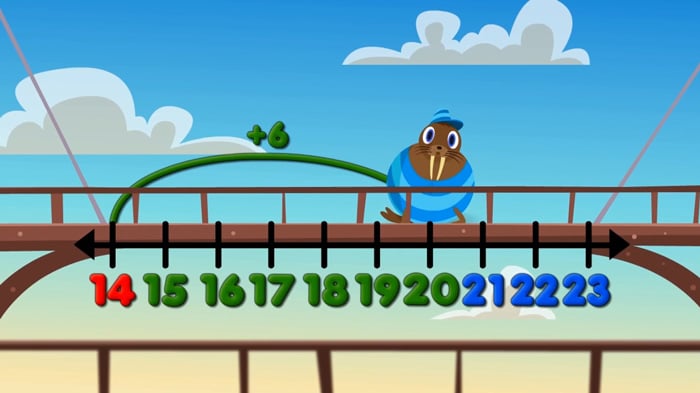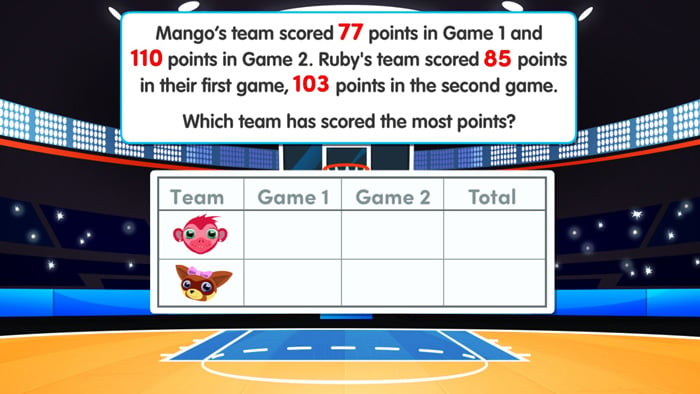7 Effective Strategies for Teaching Elementary Math
FEB 01, 2018

Teaching math in a mixed-ability classroom should take into account different learning abilities.
Teaching in today's mixed-ability classroom can be a challenge. These days, it's not uncommon to find a wide range of abilities in the one classroom—from students struggling to grasp new concepts, to those who are way ahead of their peers from day one.
This factor has contributed to a range of problems for early math learners, including a large achievement gap between students. Read more about how students can benefit from technology that supports differentiated instruction.
While individual students do benefit from different learning styles, there are a range of effective strategies which can help all students to succeed.
Additionally, the highly engaging, self-paced Mathseeds program offers a research-based solution for mixed-ability K–2 math classrooms, making math fun, interactive, and personalized for young learners. Start your free trial now.
Here are seven effective strategies for teaching elementary math:
1. Make it hands-on
Elementary math can be difficult because it involves learning new, abstract concepts that can be tricky for children to visualize.
Try to imagine what it's like for a five-year-old to see an addition problem for the very first time. Since it's a totally new concept to them, it can be hard for them to visualize a scenario where one quantity is added to another.
Manipulatives are hands-on tools that make math a lot easier for young children to understand. Tools like Lego, clay, and wooden blocks can all be used in the classroom to demonstrate how math ideas work.
For example, Lego is a great way to demonstrate number building, operations, fractions, sorting, patterns, 3D shapes, and more.
2. Use visuals and images
While students will come across countless graphs and visuals in their math textbooks, research shows this isn't the only place they should be utilized.
According to the National Council of Teachers of Mathematics, the most powerful way to use graphics in elementary math is in conjunction with specific practice or guidance, either from a teacher or another classroom tool such as Mathseeds.

3. Find opportunities to differentiate learning
It's important that students feel comfortable and are given the opportunity to learn new math ideas at their own pace, without feeling rushed. But while the idea that 'given enough time, every student will learn' is nothing new, it's easier said than done.
Mastery learning is about giving students as much time as they need to grasp a specific skill or concept. It involves varying the time you give each student to succeed.
Technology-based classroom tools offer a powerful way to differentiate learning while teaching elementary math, which is an effective way to help students in mixed-ability classrooms to succeed. Learn more here.
4. Ask students to explain their ideas
Have you ever noticed how much more confident you feel about a concept after explaining it to someone else?
Meta-cognition is the process of thinking about your options, choices, and results, and it has a big impact on the way students learn.
Before assigning a math problem, ask students to brainstorm problem-solving strategies they can use. Encourage students to work together to suggest different strategies in a respectful way.
This process can be carried out at every stage of problem solving when teaching elementary math. Once students have offered an answer, ask them to verbalize step-by-step how they got that answer.
5. Incorporate storytelling to make connections to real-world scenarios
When it comes to igniting the interest of young minds, not much comes close to a good story.
Incorporate story problems into your classroom lessons allow students to see how certain math concepts can apply to real life. Story problems are also a good way to help students understand how to use math in everyday life, and see the relevance of math.

Mathseeds provides colorful end-of-lesson books as part of its online program. Many of these are designed so students read the problem, work through it independently, and then turn to the next page to see the solution.
6. Show and tell new concepts
Elementary math teachers should normally begin each lesson with a 'show and tell.' Telling is the process of sharing information and knowledge with students, while showing involves modeling how to do something.
These days, teachers can really kick 'show and tell' up a notch with an interactive whiteboard, using animations, and videos to clearly show and tell specific math concepts in an engaging and interesting way.
7. Let your students regularly know how they're doing
Feedback is an important part of teaching elementary math and improving students' results.
Let your students know how they have performed on a specific task, along with helpful ways that they can further improve and extend their skills.
Remember, feedback is different to praise. Focus your feedback on the task itself (rather than the student) and make sure they have a clear understanding of what they did well and how they can improve next time. In Carol Dweck's research around what's known as the 'growth mindset', she writes:
“The growth mindset was intended to help close achievement gaps, not hide them. It is about telling the truth about a student's current achievement and then, together, doing something about it, helping him or her become smarter.”
Do you teach elementary math? Mathseeds is the research-based online math program specifically designed for students in grades K–2. Created by a highly experienced team of elementary teachers, Mathseeds provides self-paced lessons, automated reporting, and a range of teaching tools to help your elementary math students succeed. Sign up for a free trial today.
